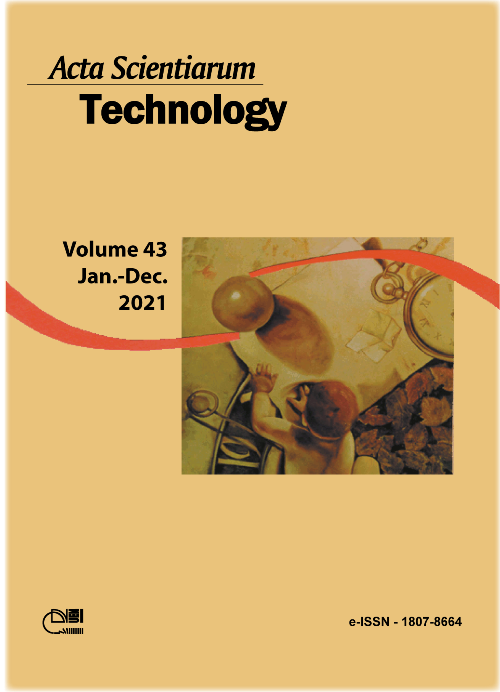Characterization of pseudo-fruits of Hovenia dulcis T. at different maturation stages and drying methods
DOI:
https://doi.org/10.4025/actascitechnol.v43i1.50571Palavras-chave:
Japanese grape; phenolic compounds; antioxidant activity.Resumo
The vast majority of fruits and unprocessed vegetables, have a very short shelf life, mainly due to its high-water activity. Drying technology is an effective process, used to increase the shelf life of these products. It also can provide an effective method of consumption of fruits in food products. In this study, the influence of the maturation stage and drying method on the phenolic compounds and antioxidant activities of Japanese grape pseudo-fruits (Hovenia dulcis T.) were studied. The centesimal composition, reducing sugars and nonreducing sugars, ratio, color, phenolic compounds and antioxidant activity by oxygen radical absorbance capacity (ORAC) of the unprocessed pseudo-fruits, at different maturation stages (immature, in maturation and mature), were analyzed. Two drying methods were employed in the pseudo-fruits (oven with air circulation and freeze drying) obtaining flour from which moisture content, instrumental color, phenolic compounds and antioxidant activity were determined. The unprocessed pseudo-fruits of Japanese grape showed significant content of phenolic compounds at the early stages of maturation and high antioxidant capacity when mature (at the final stages of maturation). In addition, they showed a high content of fibers and sugars, and can be used as raw material in the food industry. After dehydration, the freeze-drying process provided a more stable color, because this process minimizes the enzymatic browning reactions, and preserved a greater number of phenolic compounds. The antioxidant activity, however, showed to be associated with the drying method, being higher in the flour obtained from lyophilized immature pseudo-fruits.
Downloads
Downloads
Publicado
Como Citar
Edição
Seção
Licença
DECLARAÇíO DE ORIGINALIDADE E DIREITOS AUTORAIS
Declaro que o presente artigo é original, não tendo sido submetido í publicação em qualquer outro periódico nacional ou internacional, quer seja em parte ou em sua totalidade.
Os direitos autorais pertencem exclusivamente aos autores. Os direitos de licenciamento utilizados pelo periódico é a licença Creative Commons Attribution 4.0 (CC BY 4.0): são permitidos o compartilhamento (cópia e distribuição do material em qualqer meio ou formato) e adaptação (remix, transformação e criação de material a partir do conteúdo assim licenciado para quaisquer fins, inclusive comerciais.
Recomenda-se a leitura desse link para maiores informações sobre o tema: fornecimento de créditos e referências de forma correta, entre outros detalhes cruciais para uso adequado do material licenciado.















